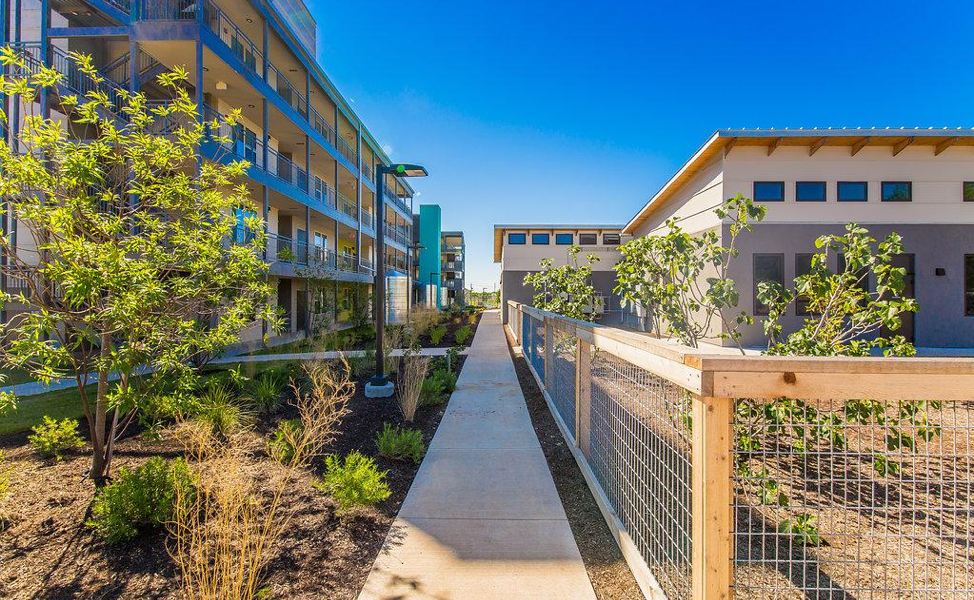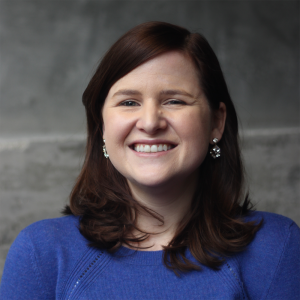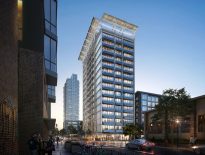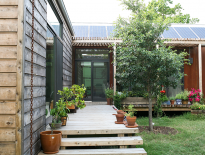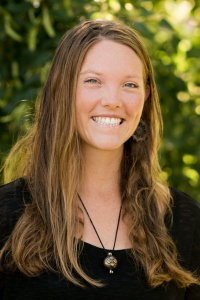
ILFI hosted our annual Affordable Housing Summit on June 17 with more than 200 attendees. The summit included lively panels and discussions on topics such as inclusive community engagement, healthy materials, and how to finance it all. Rachelle Macur spoke about the relationship between biophilia and trauma-informed design in affordable housing. Rachelle Macur is a Senior Sustainability at Group 14 Engineering in Denver, CO. Her focus is on the cross-section of humans, nature, and the built environment and how we can engage individuals and organizations to reduce resource consumption and improve occupant health & wellbeing.
Reflecting back on the Affordable Housing Summit, we asked Rachelle a few questions about her work. We hope you enjoy the interview below. Email affordablehousing@living-future.org if you want to learn more about our affordable housing work at ILFI.
1. What are the top challenges and issues you have experienced in working with affordable housing and/or under-resourced communities?
Like most projects, limited budgets are always a point of conversation, but with affordable housing it’s a critical decision point that has far-reaching implications. It’s a constant balance between quantity and quality. Do you provide more beds, getting more people off the streets, and into safe housing? Or, do you ensure that the amenities the project is providing can help support a quality life and build community? We overlay this discussion with the need for sustainable housing as well. With so many stakeholders involved, prioritizing the various needs can be challenging, requiring project teams to be skillful and creative about bringing about the greatest benefit with minimal resources.
2. What most excites you about your work? / What are you most passionate about?
I’m extremely passionate about how we design for health and healing; deeply woven into this is the concept of biophilia. I am interested in how we can use trauma-informed, biophilic design to not only help individuals to avoid triggers and cope with life’s stressors, but to actually create spaces where people can heal and flourish. By working to understand people’s lived experience and combining that with the research on our biological connection with nature, we can create spaces for people and communities to heal, to have resiliency, and to thrive.
3. How do you think sustainability can improve the lives of residents of affordable housing and their local communities?
We cannot divorce ecological sustainability from individual well-being and societal health. If we’re taking care of the earth, we’re taking care of people, and vice versa. By providing housing that is truly nested in place, we have the opportunity to design spaces that are responsive to the needs of the land and the people. This means that we’re aware of and incorporating design elements that are reflective of the project’s context (ecological, historical, societal, etc.) and of the lived experience of the staff and residents. This approach to housing creates a bond that people experience. This bond is a recognition that in caring for the earth we are caring for ourselves. This is reflected in elements like our material choices and envelope design, but also in the opportunities we create that allow for people to make their own connections to place.
Cover photo: Lakeline Learning Center, Austin, Texas (Zero-Energy Certified Affordable Housing Pilot Project). Courtesy of Foundation Communities:
